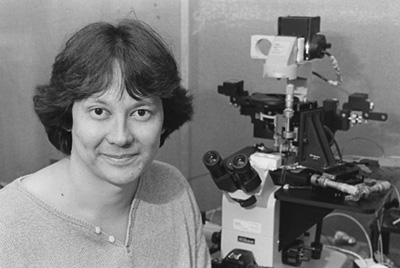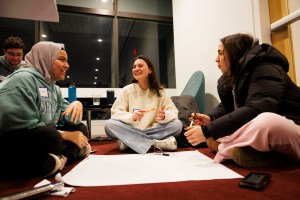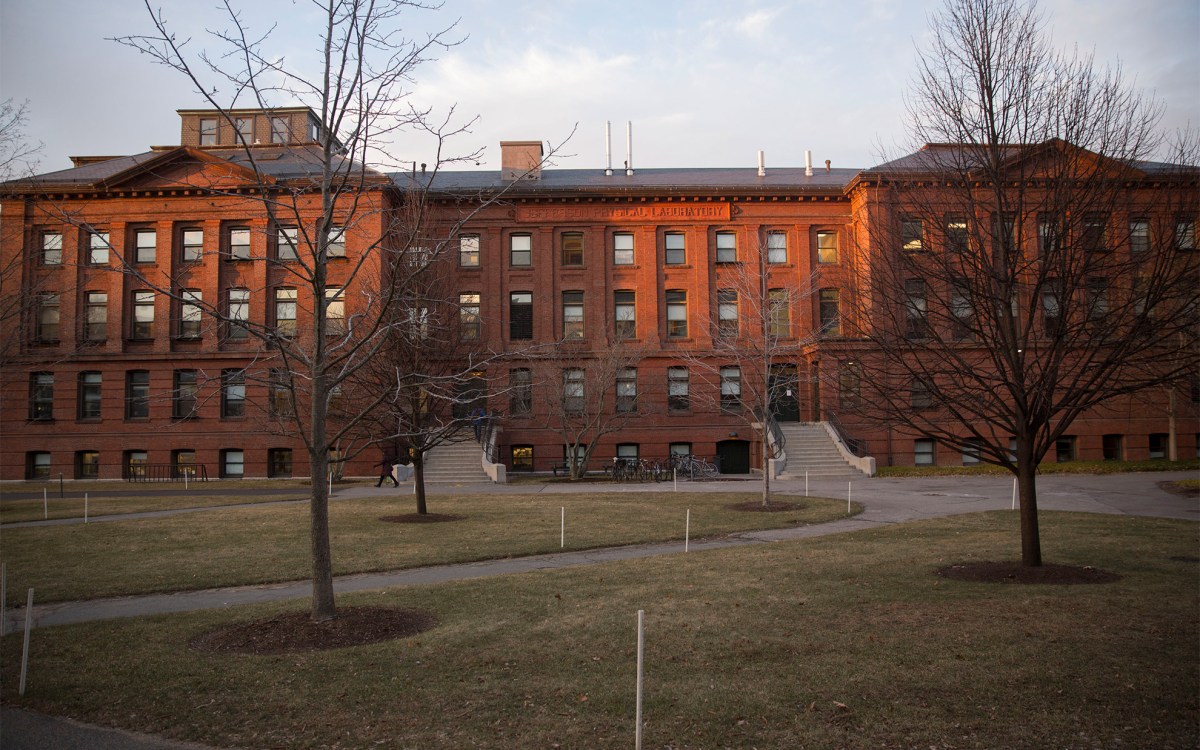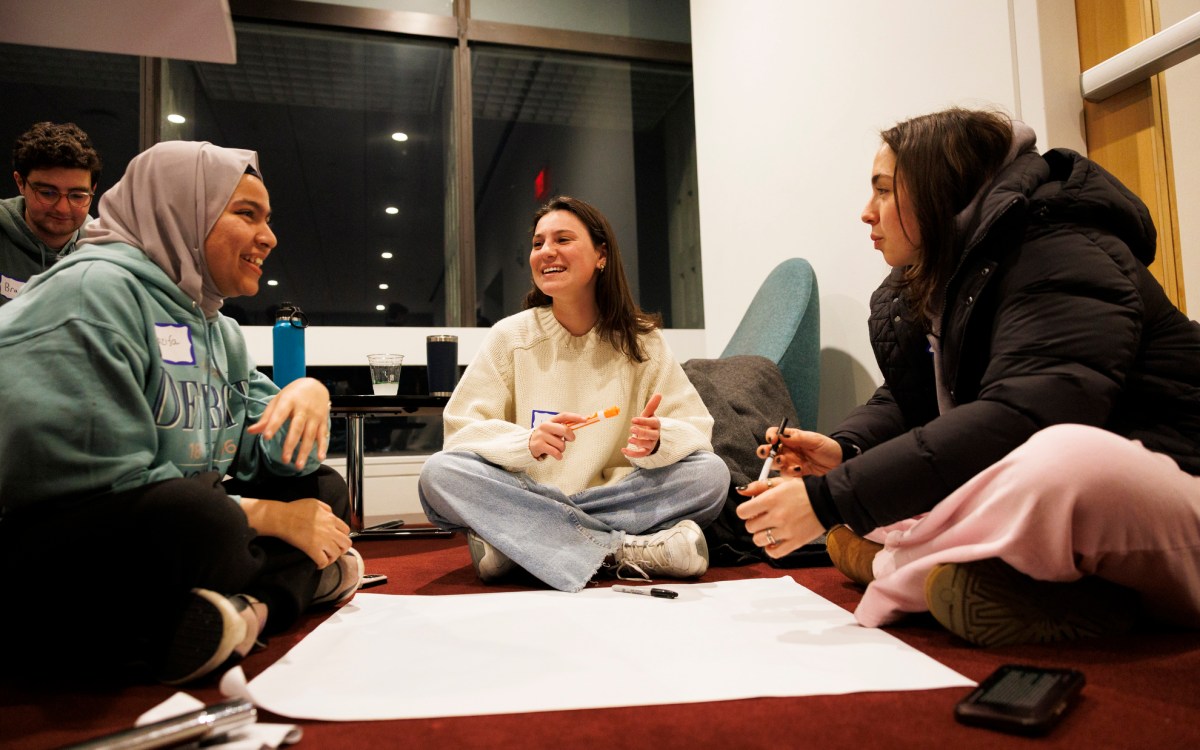Faculty of Arts and Sciences – Memorial Minute
Ernest G. Peralta

At a meeting of the Faculty of Arts and Sciences on December 11, 2001, the following Minute was placed upon the records.
Ernest Gregory Peralta was born in St. Louis, Mo., on 19 April 1959 and grew up in Fort Wayne, Ind. He began studies in biochemistry as an undergraduate at Northwestern University and obtained the Ph.D. degree at Indiana University in 1986. After postdoctoral work at Genentech, then a young biotechnology company, he came to Harvard University in 1989 as an Assistant Professor. He was promoted to Associate Professor in 1993 and to Professor in 1996. He died after a three year battle with brain cancer on 17 May 1999 at the age of 40.
Ernie Peralta studied the mechanism of crown gall tumorigenesis in plants as a graduate student in the laboratory of Walt Ream. Agrobacterium tumefaciens causes tumors on dicotyledonous plants when virulent bacteria, containing a large tumor-inducing (Ti) plasmid, infect wounded plants. During tumorigenesis, a segment of the Ti plasmid integrates into the plant nuclear DNA. Ernie Peralta found that a 23 base pair repeat on the right border of the segment of plasmid DNA promotes DNA transfer and integration, that a conserved flanking sequence, called overdrive, is also required, and that the repeat functions in a unidirectional manner.
Towards the end of graduate school, Ernie Peralta became interested in the neurosciences. He considered that a major challenge in this field is to understand the molecular basis for the regulation of complex neuronal activities, such as learning, memory, arousal, motor and sensory modulation. He reasoned that since the neurotransmitter acetylcholine has a key role in the modulation of these activities, the proper starting point for this effort would be the elucidation of the molecular mechanism of the regulation of the heart beat by acetylcholine, a well defined system with one neurotransmitter and one response. He then could apply the principles learned in this investigation to the study of the effects of neurotransmitters on the interactions between neurons. Ernie Peralta worked towards this goal for the next thirteen years starting with postdoctoral work in Daniel Capon’s laboratory at Genentech in 1986.
The cloning and expression of the cDNAs encoding four muscarinic acetylcholine receptors by Ernie Peralta in 1987 was a major contribution to the field of signal transduction. At that time, the structure of only one other G protein-coupled receptor, the b adrenergic receptor, was known. It was a striking finding of Peraltaís work that the structures of the muscarinic acetycholine receptors, which also couple to G proteins, appeared to consist of seven transmembrane segments resembling that of the b adrenergic receptor; it is now evident that all G protein-coupled receptors have this structure. Peralta’s ability to express each receptor independently led to several important observations: that subtypes m1 and m3 are coupled to phosphatidylinositol hydrolysis while m2 and m4 subtypes inhibit adenylyl cyclase activity, that one receptor can couple to two effector systems and that different receptors are coupled to the same effector through distinct G proteins.
In collaboration with David Clapham initially and then with his own electrophysiological rig, Peralta used Xenopus oocytes to express and study the functions of the muscarinic acetylcholine receptors. With the view of defining which regions of the receptors interact with G proteins, Peralta carried out domain swapping between the m2 and m3 subtypes and deletion mutagenesis of the m3 receptor, and he identified the G proteins involved in signal transduction from the m2 muscarinic receptor as Gi2 and Gi3. These were important results in this new field.
After these accomplishments, Ernie Peralta decided to tackle the next phase of the signal transduction problem: how ion channels respond to muscarinic receptor activation. He isolated cDNA’s encoding two potassium channels from rat heart, a delayed rectifier and an inward rectifier. By expressing both the m1 muscarinic acetylcholine receptor and the delayed rectifier channel in Xenopus oocytes, and also in tissue culture cells, Peralta showed that activation of the m1 receptor resulted in strong suppression of ionic currents through the channel. The pathway involved phospholipase C activation and tyrosine phosphorylation of a specific residue of the channel. This study was the first conclusive demonstration that a G protein coupled receptor which activates phospholipase C can stimulate tyrosine kinases. Furthermore, Peralta showed that protein kinase A phosphorylation of a particular threonine residue at the NH2 terminus of the channel led to enhancement of its activity.
More pertinent to the question of regulation of the heart beat, Ernie Peralta isolated the inward rectifier potassium channel that is regulated by acetylcholine and identified a particular region in the COOH-terminal domain of the channel that binds Gbg and is principally responsible for its activation. In so doing, he completed the identification of the molecular mechanism for the regulation of the heart beat by acetylcholine.
Ernie Peralta’s work was regarded highly by his peers and he served as a member of editorial boards and grant review groups. He received several awards, including the National Science Foundation Presidential Young Investigator Award and McKnight Scholar Award in Neuroscience. He was also a Searle Scholar.
Ernie Peralta was a dedicated teacher and enjoyed working with graduate students and postdoctoral fellows in his research group. He taught biochemistry and molecular biology to undergraduates as well as advanced courses in cell communication. His gentle demeanor and easy going style belied his fierce desire to uncover the mechanism of cell communication at the molecular level. His laboratory remained active and productive during his illness.
Ernie was an active sportsman, playing basketball and volleyball with members of the laboratory and enjoying tennis and the outdoors with his beloved wife, Renate. He was also an accomplished guitarist with a special interest in classical guitar.
His wisdom and his passionately academic council have been sorely missed.
In addition to his wife, Renate Hellmiss-Peralta, he leaves his mother and father, Lydia and Ben, and three sisters, Mary, Elisabeth and Rita.
Respectfully submitted,
Nancy Kleckner
Tom Maniatis
Doug Melton
Guido Guidotti, Chairman




